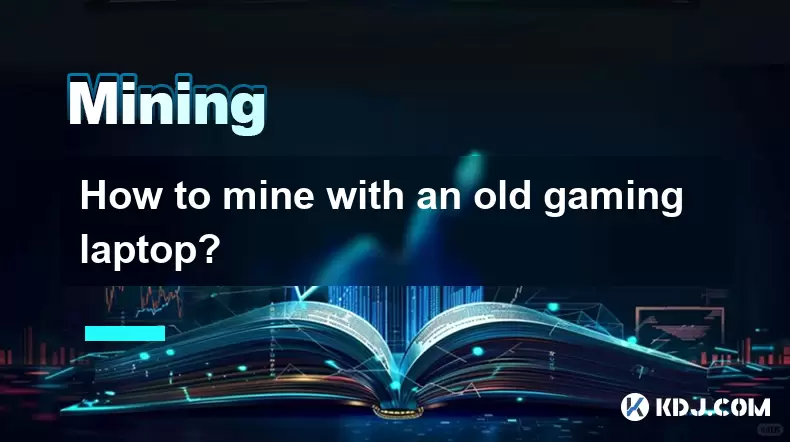-
 Bitcoin
Bitcoin $118100
0.44% -
 Ethereum
Ethereum $3765
5.84% -
 XRP
XRP $3.498
3.12% -
 Tether USDt
Tether USDt $1.000
0.00% -
 BNB
BNB $753.2
3.41% -
 Solana
Solana $181.7
3.58% -
 USDC
USDC $0.9999
0.01% -
 Dogecoin
Dogecoin $0.2704
12.75% -
 Cardano
Cardano $0.8684
5.85% -
 TRON
TRON $0.3151
-0.86% -
 Hyperliquid
Hyperliquid $46.06
4.51% -
 Stellar
Stellar $0.4695
2.48% -
 Sui
Sui $3.910
3.18% -
 Chainlink
Chainlink $19.36
6.65% -
 Hedera
Hedera $0.2750
3.99% -
 Bitcoin Cash
Bitcoin Cash $544.6
6.31% -
 Avalanche
Avalanche $25.12
3.69% -
 Shiba Inu
Shiba Inu $0.00001559
5.40% -
 Litecoin
Litecoin $116.8
5.10% -
 UNUS SED LEO
UNUS SED LEO $8.991
0.05% -
 Toncoin
Toncoin $3.283
2.79% -
 Polkadot
Polkadot $4.509
3.97% -
 Uniswap
Uniswap $10.67
6.58% -
 Ethena USDe
Ethena USDe $1.001
-0.01% -
 Monero
Monero $323.2
0.48% -
 Pepe
Pepe $0.00001410
6.37% -
 Bitget Token
Bitget Token $4.964
1.93% -
 Dai
Dai $0.9998
-0.01% -
 Aave
Aave $326.2
3.85% -
 Bittensor
Bittensor $421.8
2.46%
How to mine with an old gaming laptop?
Mining cryptocurrency with an old gaming laptop is possible but limited by GPU power, heat management, and earnings potential.
Jul 20, 2025 at 02:35 am

Understanding the Feasibility of Mining with an Old Gaming Laptop
Mining cryptocurrency using an old gaming laptop is a topic that has gained attention among crypto enthusiasts who want to repurpose older hardware. While it's technically possible, there are several factors to consider before proceeding. The most critical aspect is whether your laptop’s GPU (Graphics Processing Unit) is powerful enough to handle mining algorithms like Ethash or KawPow. Older GPUs such as the NVIDIA GTX 970M or AMD Radeon R9 M485X may still offer some utility but will yield low hash rates compared to modern GPUs.
Another key consideration is thermal management. Laptops are not designed for continuous high-load operations like mining. Prolonged mining can cause overheating and reduce the lifespan of components. Therefore, ensuring adequate cooling through external cooling pads or improved ventilation becomes essential.
Choosing the Right Cryptocurrency to Mine
Not all cryptocurrencies are suitable for mining on an old gaming laptop. Some coins require high computational power and memory bandwidth that older GPUs simply cannot provide efficiently. For example, Ethereum requires at least 4GB VRAM and performs best on more recent graphics cards. Instead, you might consider mining Monero (XMR), which uses the RandomX algorithm optimized for CPUs, making it more accessible for older machines.
Alternatively, Ravencoin (RVN) or Ergo (ERG) use the KawPow algorithm, which can be mined effectively with older GPUs. It’s important to compare the hash rate, network difficulty, and potential earnings across different coins to determine if mining with your laptop is economically viable.
Selecting Appropriate Mining Software
To mine effectively, you need to choose compatible software based on your GPU brand and the cryptocurrency you're targeting. For NVIDIA GPUs, popular choices include:
- T-Rex Miner – Supports KawPow and Ethash.
- NBMiner – Offers good performance on both NVIDIA and AMD GPUs.
- PhoenixMiner – Known for stability when mining Ethereum or similar coins.
For AMD-based laptops, options like TeamRedMiner or SRBMiner-MULTI are widely used. These miners support various algorithms and are optimized for efficiency on older hardware. Always ensure you download the latest version from official sources to avoid malware.
Once installed, configure the miner by specifying the pool address, wallet address, and any additional parameters required by the specific coin. Most pools provide configuration templates to simplify this process.
Setting Up a Mining Pool Account
Solo mining with an old gaming laptop is generally impractical due to low hash rates. Joining a mining pool increases your chances of earning consistent rewards. To begin, create an account on a reputable mining pool platform such as:
- F2Pool
- Hiveon
- NanoPool
- MiningPoolHub
After registration, generate a worker name and password within the pool dashboard. These credentials will be entered into your mining software configuration file. Make sure to select the correct server location for lower latency and better connection stability.
Some pools allow merged mining, where you can simultaneously mine multiple coins using the same hash power. This feature can enhance profitability when supported by your chosen coin.
Optimizing Performance and Managing Heat
To maximize mining efficiency while minimizing wear on your laptop, several optimizations can be made:
- Use undervolting tools like MSI Afterburner or EVGA Precision X1 to reduce power consumption and heat output without significantly lowering performance.
- Monitor temperatures using HWInfo64 or GPU-Z to prevent thermal throttling or damage.
- Adjust fan curves to increase airflow during mining sessions.
- Avoid running other applications simultaneously to prevent system instability.
Be aware that extended mining sessions can degrade your laptop’s battery over time. If possible, remove the battery or operate the laptop plugged in directly to reduce fire risk and prolong battery life.
Troubleshooting Common Issues
When mining with an old gaming laptop, several issues may arise:
- Driver compatibility: Ensure you’re using the latest drivers optimized for mining. Sometimes, older versions perform better with certain miners.
- Crashes or freezes: Lower intensity settings in your miner or disable overclocking until stability improves.
- Connection timeouts: Check your internet connection and pool server status. Use a wired Ethernet connection for better reliability.
- Low hash rate: Verify that no background processes are consuming GPU resources. Disable unnecessary startup programs.
If your laptop shuts down unexpectedly, check BIOS settings for power-saving features that might trigger automatic shutdowns under load.
Frequently Asked Questions
Can I mine Bitcoin with my old gaming laptop?
Bitcoin mining is performed using ASIC devices and is no longer feasible with GPUs, especially on older laptops. You’ll get better results mining altcoins like Monero or Ravencoin instead.
Will mining damage my gaming laptop?
Prolonged mining can accelerate component wear, particularly the GPU and cooling system. Proper cooling and monitoring can mitigate risks, but it’s not recommended for long-term use.
Do I need a special wallet for mining?
You don’t need a special wallet, but it’s advisable to use one that supports the specific cryptocurrency you’re mining. Popular options include Electrum for Bitcoin-based coins and XMR Wallet for Monero.
How much can I earn mining with an old laptop?
Earnings vary greatly depending on the coin, your GPU’s performance, and electricity costs. On average, older GPUs may yield less than $1 per day after deducting power expenses.
Disclaimer:info@kdj.com
The information provided is not trading advice. kdj.com does not assume any responsibility for any investments made based on the information provided in this article. Cryptocurrencies are highly volatile and it is highly recommended that you invest with caution after thorough research!
If you believe that the content used on this website infringes your copyright, please contact us immediately (info@kdj.com) and we will delete it promptly.
- NFT Performers in Flux: Pudgy Penguins, Courtyard, and the Shifting Sands of the Market
- 2025-07-21 10:30:12
- Decoding HKMA's Stablecoin Licensing System: A New Era for Digital Assets?
- 2025-07-21 10:50:11
- Address, CryptoPunks, NFTs: What's the Buzz?
- 2025-07-21 10:50:11
- Ethereum, Crypto, and Market Moves: What's the Deal?
- 2025-07-21 11:30:11
- CoinDCX Hack: A Wake-Up Call for Crypto Security
- 2025-07-21 11:35:12
- Dogecoin & Meme Coins in 2025: Hype or Hyper-Growth?
- 2025-07-21 08:30:12
Related knowledge

How are crypto mining profits taxed?
Jul 14,2025 at 12:28am
Understanding Cryptocurrency Mining and TaxationCryptocurrency mining involves validating transactions on a blockchain network and earning rewards in ...

How to keep a mining rig cool
Jul 12,2025 at 01:42pm
Understanding the Importance of Cooling in Mining RigsCryptocurrency mining is an intensive process that places heavy demand on hardware components, p...

How to mine crypto on a gaming PC
Jul 16,2025 at 12:00pm
What is Crypto Mining on a Gaming PC?Crypto mining involves using your computer's processing power to validate transactions on a blockchain network. A...

How to set up a crypto miner
Jul 16,2025 at 09:14am
Understanding Ethereum Gas Fees: What Are They and How Do They Work?Ethereum gas fees are a fundamental aspect of the network, representing the cost r...

Can you mine crypto on a laptop?
Jul 16,2025 at 02:21am
Is It Feasible to Mine Cryptocurrency on a Laptop?Mining cryptocurrency on a laptop is technically possible, but feasibility depends heavily on the ha...

Is crypto mining worth it?
Jul 16,2025 at 01:21am
Understanding the Basics of Crypto MiningCrypto mining refers to the process of validating transactions on a blockchain network by solving complex mat...

How are crypto mining profits taxed?
Jul 14,2025 at 12:28am
Understanding Cryptocurrency Mining and TaxationCryptocurrency mining involves validating transactions on a blockchain network and earning rewards in ...

How to keep a mining rig cool
Jul 12,2025 at 01:42pm
Understanding the Importance of Cooling in Mining RigsCryptocurrency mining is an intensive process that places heavy demand on hardware components, p...

How to mine crypto on a gaming PC
Jul 16,2025 at 12:00pm
What is Crypto Mining on a Gaming PC?Crypto mining involves using your computer's processing power to validate transactions on a blockchain network. A...

How to set up a crypto miner
Jul 16,2025 at 09:14am
Understanding Ethereum Gas Fees: What Are They and How Do They Work?Ethereum gas fees are a fundamental aspect of the network, representing the cost r...

Can you mine crypto on a laptop?
Jul 16,2025 at 02:21am
Is It Feasible to Mine Cryptocurrency on a Laptop?Mining cryptocurrency on a laptop is technically possible, but feasibility depends heavily on the ha...

Is crypto mining worth it?
Jul 16,2025 at 01:21am
Understanding the Basics of Crypto MiningCrypto mining refers to the process of validating transactions on a blockchain network by solving complex mat...
See all articles

























































































